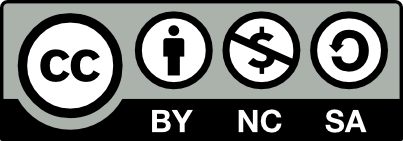Checking for non-preferred file/folder path names (may take a long time depending on the number of files/folders) ...
This resource contains some files/folders that have non-preferred characters in their name. Show non-conforming files/folders.
This resource contains content types with files that need to be updated to match with metadata changes. Show content type files that need updating.
| Authors: |
|
|
|---|---|---|
| Owners: |
|
This resource does not have an owner who is an active HydroShare user. Contact CUAHSI (help@cuahsi.org) for information on this resource. |
| Type: | Resource | |
| Storage: | The size of this resource is 772.6 KB | |
| Created: | Apr 20, 2021 at 1:30 p.m. | |
| Last updated: | Nov 28, 2021 at 6:04 p.m. | |
| DOI: | 10.4211/hs.af43ffe74d1545f5a918a8af6031c33d | |
| Citation: | See how to cite this resource |
| Sharing Status: | Published |
|---|---|
| Views: | 623 |
| Downloads: | 38 |
| +1 Votes: | Be the first one to this. |
| Comments: | No comments (yet) |
Abstract
A field study was performed in ten small streams in five different catchments located in the South-East of Sweden between 2017 and 2020. The aim of the field survey was to investigate hyporheic exchange processes in the ten streams using different methodologies, as described in the paper where the dataset was used (Morén et al., 2021). The field survey included in-stream Rhodamine WT tracer tests, hydraulic conductivity measurements and longitudinal measurements of the streambed topography and stream water depth.
Subject Keywords
Coverage
Spatial
Content
readme.txt
This dataset contains tracer test breakthrough curves, streambed and water surface profile elevation along the thalweg and hydraulic conductivity of streambed sediments in ten stream reaches in southest of Sweden. Reffere to separate table for the approximate possition of each reach. In the folder "Tracer test breakthrough curves" ten text files are found, which represents the resulting breakthrough curves from Rhodamine WT (RWT) tracer tests in ten different reaches performed at ten different occasions. The file-names includes reach name and date of the injection. Data description First column: Time since injection at the upstream measuring point (seconds) Second column: RWT concentration at the upstream measuring point (µg/L) Third column: Time since injection at the downstream measuring point (seconds) Forth column: RWT concentration at the downstream measuring point (µg/L) RWT was injected as a slug in the stream water column, a specific distance upstream the initial measuring point. Submersible fluorimeters (Cyclops C7, Turner Designs, Inc., U.S.A.) were employed upstream and downstream the investigated stream reach to detect the florescence. Standard calibration curves were prepared in the lab to transform the resistivity (mV) into concentration RWT (µg/L). Tracer tests are described more thoroughly in Morén et al. (2021). In the folder "Elevation measurements", ten text files are found, which includes stream topography elevation and water surface profile elevation along the stream thalweg in ten different reaches. First column: Distance along the stream thalweg (m) Second column: Elevation of the streambed (m) Third column: Elevation of the stream water surface profile (m) Measurements were performed usin a Leica Sprinter 50 automatic leveling instrument (Leica Geosystems AG, Switzerland), at close time to the tracer tests found in this dataset. Topography measurements are described more thorouly in Morén et al. (2021). In the folder "Hydraulic conductivity measurements" an excell file including hydraulic conductivity data, for four to six cross sections in eight of the ten reaches investigated in Morén et al. (2021). The hydraulic conductivity was measured in each point through a falling head tests using a piezometer, and measurements are described more thoroughly in Morén et al. (2021). In study reaches R6c and R6d, hydraulic conductivity was not measured as part of this study, but measurement preformed in previous studies with the same devise (Kunkel and Radke, 2011; Riml et al., 2013).
Related Resources
| The content of this resource references | Kunkel U., Radke M. (2011) Reactive tracer test to evaluate the fate of pharmaceuticals inrivers. Environ Sci Technol 2011; 45:6296–302 |
| The content of this resource references | Riml, J., Wörman, A., Kunkel, U., & Radke, M. (2013). Evaluating the fate of six common pharmaceuticals using a reactive transport model: Insights from a stream tracer test. Science of the Total Environment, 458–460, 344–354. https://doi.org/10.1016/j.scitotenv.2013.03.077 |
| This resource is referenced by | Morén, I., Riml, J., & Wörman, A. (2021). Cross-validating hydromechanical models and tracer test assessments of hyporheic exchange flow in streams with different hydromorphologal characteristics. Water Resources Research, 57, e2021WR030248. https://doi.org/10.1029/2021WR030248 |
How to Cite
This resource is shared under the Creative Commons Attribution-NoCommercial-ShareAlike CC BY-NC-SA.
http://creativecommons.org/licenses/by-nc-sa/4.0/

Comments
There are currently no comments
New Comment